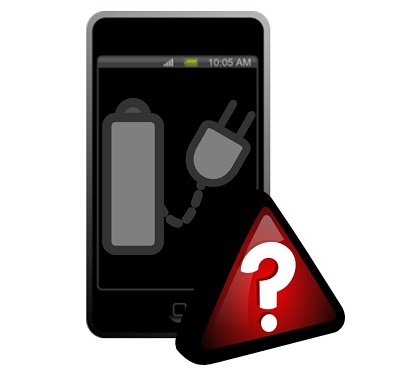There are some considerable advantages to wearables and they are becoming increasingly obvious.
With all the different DIY monitors and devices that patients have to use at home – which now include wearable technology in many different forms – the shape of the relationship between doctors and patients is starting to change, as is the care available from doctors and the care patients can provide themselves.
Blood pressure and glucose monitors, fitness bands, and other devices make tracking easier.
Wearable technology has pushed this trend forward very quickly, as wristbands and smartwatches offer sensors that can perform functions such as heartbeat and blood pressure tracking, sleep tracking, activity tracking and a range of other capabilities. Not only is it giving patients the ability to better understand the functions of their body systems, over time, but according to Yale University medical professor, Stephen Huot, doctors are already starting to see the benefits of the use of these wearables.
This helps to explain why so many people are using wearable technology and why this trend is growing.
 In 2012, Pew Research Center conducted a nationwide survey that determined that even by that time, 69 percent of adults were monitoring at least one indicator of health and wellness. These included diet, weight or exercise. Among them, 21 percent said that they were using a form of technology to be able to track that particular indicator. That said, Pew now projects that as weareables become more readily available, it will skyrocket in popularity, to the point that people will be commonly using wearable or even embedded devices by 2025.
In 2012, Pew Research Center conducted a nationwide survey that determined that even by that time, 69 percent of adults were monitoring at least one indicator of health and wellness. These included diet, weight or exercise. Among them, 21 percent said that they were using a form of technology to be able to track that particular indicator. That said, Pew now projects that as weareables become more readily available, it will skyrocket in popularity, to the point that people will be commonly using wearable or even embedded devices by 2025.
Pew also explained in the report on its research that among the survey participants, 46 percent felt that their behaviors in tracking their health indicator(s) had altered their overall approach to a healthful lifestyle or toward someone else for whom they were providing care. Furthermore 40 percent of the survey participants said that the data they had collected by tracking had driven them to pose new and different questions to their doctors, or had even encouraged them to obtain a second opinion.
For this reason, doctors are increasingly prescribing the use of wearable technology, particularly for monitoring certain chronic conditions, such as patients with diabetes.
A growing number of reports are indicating that companies – including Motorola Solutions – are working on it.
Because of the broad scale dependence that much of the population has on their mobile devices, when a smartphone battery dies, it can cause people to experience anything from a slight frustration to a large amount of panic.
Companies are now starting to come up with new strategies to make sure mobile device batteries stay charged.
While a considerable amount of this effort is being focused on developing a slimmer, lighter and more powerful smartphone battery, others are working on the challenge of creating devices that don’t need as much power in order to run all the features a user wants for his or her everyday life. Consumers, themselves, have been doing what they can to get the most battery life from their devices, including dumping power draining apps and bloat-ware, when they can, and reducing certain activities – such as streaming video – when they’re on their last bar of battery.
However, some efforts are now focusing on unique strategies such as a self-charging smartphone battery.
 While there may be more than one company working on such an effort, Motorola Solutions has found itself in the spotlight for just this reason. At the time of the writing of this article, the claims have only been as official as a rumor, but they are starting to appear in a growing number of places and are pointing to the company’s efforts with increasing detail. It is important to note that it is Motorola Solutions and not Motorola Mobility that has been identified as a part of this development.
While there may be more than one company working on such an effort, Motorola Solutions has found itself in the spotlight for just this reason. At the time of the writing of this article, the claims have only been as official as a rumor, but they are starting to appear in a growing number of places and are pointing to the company’s efforts with increasing detail. It is important to note that it is Motorola Solutions and not Motorola Mobility that has been identified as a part of this development.
Motorola Solutions is the result of a 2011 division of Motorola (the other half being Motorola Mobility). The Mobility side is the Moto and Droid side of the business and is also behind the Moto 360 wearable technology. On the other hand, the Solutions side of the company provides public safety equipment (such as police scanners and radios) and network solutions. Essentially, Mobility is the consumer electronics side, while Solutions is the public side. Solutions, unlike Mobility, was not sold to Google and then Lenovo as was the case with Mobility.
While this type of automatically recharging smartphone battery may seem to have appeal, it is still in a rumor phase and is far from the market. Until then, we will need to continue with careful power saving strategies and good quality external battery charger products.
 In 2012, Pew Research Center conducted a nationwide survey that determined that even by that time, 69 percent of adults were monitoring at least one indicator of health and wellness. These included diet, weight or exercise. Among them, 21 percent said that they were using a form of technology to be able to track that particular indicator. That said, Pew now projects that as weareables become more readily available, it will skyrocket in popularity, to the point that people will be commonly using wearable or even embedded devices by 2025.
In 2012, Pew Research Center conducted a nationwide survey that determined that even by that time, 69 percent of adults were monitoring at least one indicator of health and wellness. These included diet, weight or exercise. Among them, 21 percent said that they were using a form of technology to be able to track that particular indicator. That said, Pew now projects that as weareables become more readily available, it will skyrocket in popularity, to the point that people will be commonly using wearable or even embedded devices by 2025.
 While there may be more than one company working on such an effort, Motorola Solutions has found itself in the spotlight for just this reason. At the time of the writing of this article, the claims have only been as official as a rumor, but they are starting to appear in a growing number of places and are pointing to the company’s efforts with increasing detail. It is important to note that it is Motorola Solutions and not Motorola Mobility that has been identified as a part of this development.
While there may be more than one company working on such an effort, Motorola Solutions has found itself in the spotlight for just this reason. At the time of the writing of this article, the claims have only been as official as a rumor, but they are starting to appear in a growing number of places and are pointing to the company’s efforts with increasing detail. It is important to note that it is Motorola Solutions and not Motorola Mobility that has been identified as a part of this development.